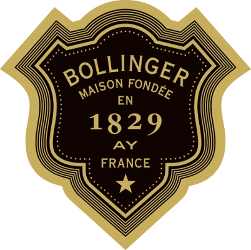
Bollinger certainly doesn’t need an introduction, but If you have never tasted or - believe me it occurs - never heard of Bollinger then you’re certainly missing out on culture. What Church’s is for shoes and Rolls Royce for cars, Bollinger is for champagne. It’s not only James Bond’s preferred champagne but among connoisseurs Bollinger is absolute top-notch. You’ll find it in the best Michelin restaurants, exclusive bars, fine purveyors of champagne and even at auctions for rare vintages and the collector's items.
Bollinger is still family-owned by Societé Jacques Bollinger. Since September Bollinger has been directed by Charles-Armand de Belenet, who replaced the former Coca Cola Europe director Jérôme Philipon. SJB also owns champagne Ayala, Delamain Cognac, Langlois-Chateau Loire wines, Chanson Burgundy and two distribution companies: Bollinger Diffusion in France and Mentzendorff in the UK. Compared to Moët & Chandon, Veuve Clicquot and Taittinger, Bollinger is a relatively small house.
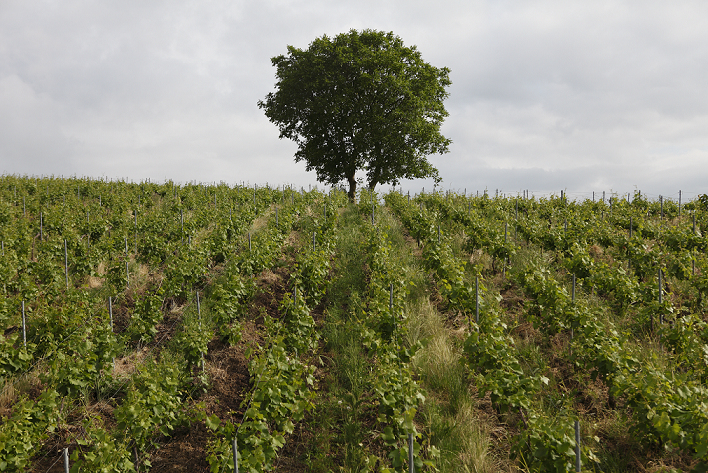
They currently own 170 hectares of vineyards, most of which are located in Premier Cru and Grand Cru villages - including a small parcel “Côte des Enfants” for their notorious red Coteaux Champenois wine. Today Bollinger is the only Champagne House that produces a still red wine. The vines are predominantly Pinot Noir, clone 386. For Bollinger this specific clone ensures good quality and projection of the terroir characteristics. The grapes externally bought by the house are subjected to very strict regulations in terms of yields, viticulture, the use of fertilizers and herbicides. Also Bollinger was the first house to receive the “sustainable viticulture/HVE” certification.
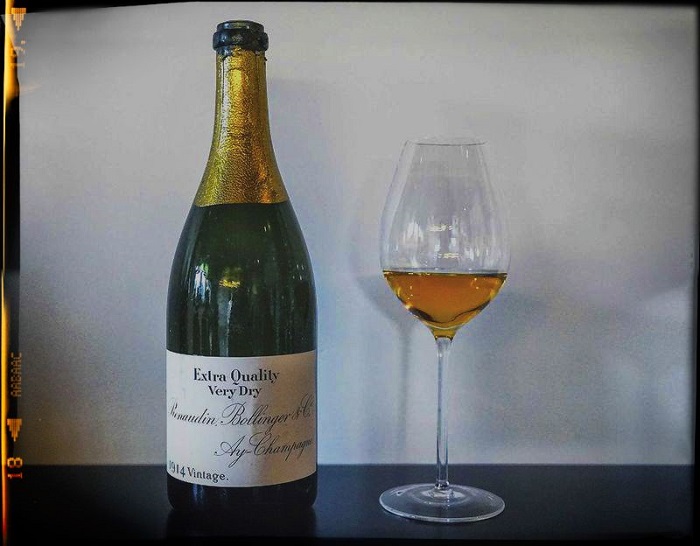
Bollinger was one of the low-dosage pioneers in a time when the overwhelming majority of champagne houses did exactly the opposite. The early 20th century cuvees were called “Extra Quality Very Dry". Today’s wines are still very dry, and a demi-sec is obviously not produced. The house was also quite late to produce a rosé Champagne since Madame Lily Bollinger protested making a rosé champagne because they were served in brothels. If she would make a rosé cuvée it would only bear the Bollinger name if it had the power, aromatic complexity and above all the structure that had always marked the House style. This was the birth of La Grande Année rosé. The first vintage was the legendary 1979. Grande Année Rosé 1996 is still the best rosé champagne that I’ve tasted and older vintages are on top of my wishlist.
A while ago they have discovered a secret room in the cellars with very old champagnes among which bottles dating back to 19th century. Some of these treasures were not yet disgorged and showed a remarkable freshness which once again confirms that Bollinger champagnes have a striking ageing capability.
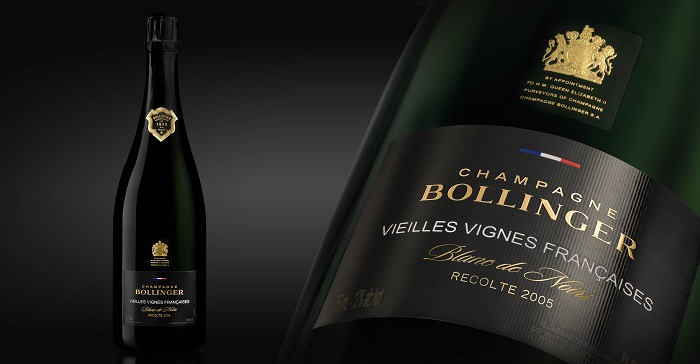
The crown jewel, Blanc de Noirs Vieilles Vignes Françaises, is made with grapes coming from one of the very few plots with ungrafted vines to have survived the phylloxera crisis in Champagne. The name Vieilles Vignes is not referring to the age of the vines but rather the planting method where the vines grow wild. Unfortunately even as a wine writer specializing in champagne I didn’t get the opportunity to taste it, but I have tasted a soupçon of VVF 1989, one of my most memorable champagne experiences. The wines become all the more rare because they have lost the parcel “Croix Rouge” due to phylloxera and the future of the wine is not ensured.
Even though their range of wines is extensive and include cuvées like La Grande Année, R.D. and special editions (2003 by Bollinger, Spectre 2009, Rosé 2006 limited) with a significant amount of Pinot Noir in the blend, I’m still missing a true Blanc de Noirs.
I’m quite sure many Bollinger-lovers will agree on that.
I had the privilege to do a horizontal tasting together with Deputy cellar master Denis Bunner.
We tasted Spécial Cuvée NV, Rosé NV, La Grande Année 2007, R.D. 2002, La Grande Année Rosé 2005 and the Rosé 2006 limited edition.
The glassware that was used was specially designed for Bollinger by Lehmann glass.
Spécial Cuvée (base 2013)
60% Pinot Noir, 25% Chardonnay and 15% Pinot Meunier
90 points with 93 potential
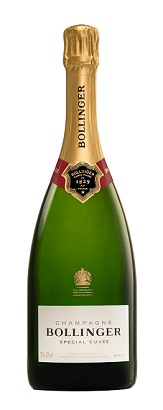
The NV Bollinger Spécial Cuvée from 10 years ago was quite different than today. For the non-connoisseur it was too heavy and vinous but for me this was a true “Sean Connery” wine: masculine, complex and exuberant with a lovely earthy and a bit of an austere oxidative character. Drinking old Spécial Cuvée out of Magnum is one of the best champagne experiences you can have. Suddenly there was a major change of style. I must admit that I was quite disappointed when I tasted Spécial Cuvée in 2012 with Mathieu Kauffmann. The character had turned into a less complex more elegant and feminine wine. This seemed to go unnoticed by the wine press. The Spécial Cuvée that I tasted recently at Bollinger was from the base harvest 2013 and is fabulous. Lovely golden color with a very refined effervescence. The nose is inviting and starts elegant with almond blossom and orange blossom followed by vine peach, golden delicious apple and Damson plums with overtones of deep yeasts, rosehip, oven baked puff pastry and toasted walnuts. Later in the glass you get apples caramelized in butter, smoked ham and wet blonde tobacco. Yes, this is Bollinger! The mouthfeel is full and dynamic without being heavy. On the palate you get pear, crunchy apples and overtones of caramelized apples with yeast. On the mid palate there’s prunes and rosehip. The long finish projects lemon oil, kumquat, slate and nutmeg with a hint of tobacco and black pepper. This would be so nice with grilled lobster belle vue but is of course also a perfect aperitif. The new shape of the bottle should ensure that the wine will age just as well as in Magnum. One day, the forgotten bottles in your cellars will give you a lot of pleasure!
Rosé (base 2014)
62% Pinot Noir, 24% Chardonnay and 14% Pinot Meunier with 5 to 6% red wine added.88 points with 90 potential
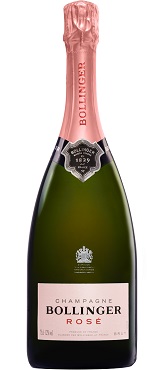
The non-vintage rosé is a seductive wine. The nose is sultry with forrest strawberry, red currant, cherry blossom, smoke, freshly cut mushrooms and chalk stone. After a longer time in the glass you get brambles, crema di balsamico and duxelle of mushrooms with dry foliage. The texture is very sensual with such a fine bubble and caressing mousse. On the palate you get again the redcurrant, forrest strawberry and raspberry with cured ham and blood orange on the mid palate. The finish is elegant with lots of “finesse” showing citrus fruits, redcurrant and a light toastiness.
After a a longer while in the glass more notes of maturity emerge with lovely butter baked porcini mushrooms and old redcurrant comfiture. This rosé begs for lobster belle vue. One of the best NV rosés on the market, and perhaps the perfect “third date” wine!
La Grande Année 2007
70% Pinot Noir and 30% Chardonnay92 points with 94 potential
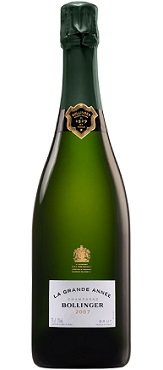
Bollinger’s newest La Grande Année champagne is from the vintage 2007. The nose is very tropical with ripe mango, papaya, ripe pomelo, cocoa butter, frangipane pastry with apricot, tamarind, almond oil and woody overtones reminiscent of a young Pernand-Vergelesses with the impression of new oak. Blind I would have sworn that it was Pinot Meunier dominated. After some time in the glass it showed concentrated peach syrup (fresh Bellini cocktail), jackfruit and the typical Bollinger tobacco notes with hints of roasted coconut. On the palate you get peach with acacia honey, again the ripe mango, a hint of pineapple, sharp citrus, fresh hazelnut and smoke with candied rose grapefruit and delicious ripe mangosteen on the mid-palate. The long finish is surprisingly linear with reverberating citrus, toast and minerality. This is definitely the most atypical La Grande Année that I’ve tasted but it is a sexy Bolly that is at the same time very accessible and approachable now, but with brilliant potential and a long future ahead.
Rosé 2006 limited edition
72% Pinot Noir and 28% Chardonnay with the addition of Côte des Enfants red wine93 points with 95 potential
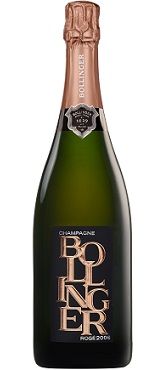
I had the privilege to taste this wine on a Bollinger - life can be perfect - party and once more with the assistant cellar master Denis Bunner at Bollinger. My conclusion remains the same: what a marvelous rosé it is! It spends 10 years on the lees. Lovely copper-rose color with a very delicate, refined effervescence. The nose is very perfumated with Turkish rose oil, rose petals, bergamot, dried mandarin orange, lots of fresh raspberry, violin rosin, a hint of musk, nutmeg and an overtone of old Port (quite oxidative indeed), toast and slate. After warming up in the glass it became smoky, nutty with walnuts, I got a hint of sandalwood, patchouli and that lovely smell of old red currant comfiture and quince jelly. When you give it time in the glass you get cured parma ham and an impression of leather and lots of Alsatian patisserie. In the mouth this is elegant, sexy, dynamic but also compact. On the palate you get raspberry, goji berry, dried redcurrant, bramble, a hint of Fino sherry (Bolly goût Anglaise is back!) and dry toast with lovely acidity of kumquat, mandarin orange, redcurrant and a rather dark - going towards graphite - minerality topped of with rose pepper corns. Perfectly balanced with a fabulous acidity of red berries. Excellent to drink now but this could be a serious competitor for the Grande Année 1996 Rosé after some more time in the cellar.
La Grande Année Rosé 2005
72% Pinot Noir and 28 % Chardonnay with the addition of 5% red Côte aux Enfants wine89 points
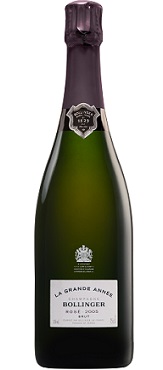
As expected this vintage rosé is evolving fast but I’m not sure going in the right direction. When launched primeur it was opulent and ripe, typical for the vintage but with a lively acidity and I rated it 94 with 95 potential. Unfortunately the bottle I tasted at Bollinger left a rather worrisome impression. Intense salmon pink with orange copper appearance and a very refined effervescence. The nose starts to show maturity with sautéed mushrooms, dried honey, rosehip, polishing wax and a wealth of jellied red fruits and a hint of gingerbread. There are also quite peculiar overtones of beetroot and elderberry that remind me of oxidative biodynamic red wine, not particularly something that I want in a Grande Année rosé. The mouthfeel is beautifully structured, full bodied and dynamic. On the palate you get raspberry, candied blood orange, yellow grapefruit, cranberry comfiture and smoke. The finish is long and has the typical Bollinger woody spices but it lacks acidity and a touch of sensual creaminess is missing. This is a burlesque rosé perfect to pair with duck breast with beetroot and celeriac. Personally I would rather buy the limited edition Rosé 2006. Drink now.
Récemment Dégorgé 2002
60% Pinot Noir and 40% Chardonnay92 points with 95 potential

The evolution for the 2002 is going remarkably slowly, which in my opinion is a good thing. At this stage the wine is rather restrained and much more austere and shy than when first tasted back in 2014. Intense golden color with a mild effervescence and fat tears on the glass. On the nose you get potpourri, cloves, asafoetida, lovage, fenugreek and a hint of marmite yeast with vague hints of mushrooms. Underneath this dark carpet of spices you will find youthful apples, pear, apricot, quince and chalk but also an oxidative overtone of Fino sherry. After a longer while in the glass it showed toffee, straw, roasted lemon and quince cheese though the aroma stays compressed. Decanting the wine would have been ideal. The mouthfeel is vinous and silky yet quite powerful. On the palate you get apricot, Cox apples, quince, artichoke juice and lemon zest. Chicory root, lovage and fried onion warms up the mid-palate. On the long finish you get rhubarb, lemon and unripe kiwi shining through altogether with dry toast and a dark minerality. If you are planning to open a bottle than I suggest to treat it like a great white Burgundy.
Bollinger 1914 image is courtesy of Bloomberg.com and has been used for non-commercial purposes only.
Special thanks to Christian Dennis, Denis Bunner, Veronique Scaillet and my editors Ed Hodson and Peter Colin.


